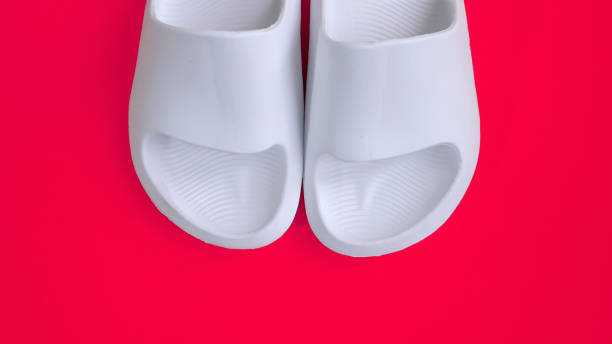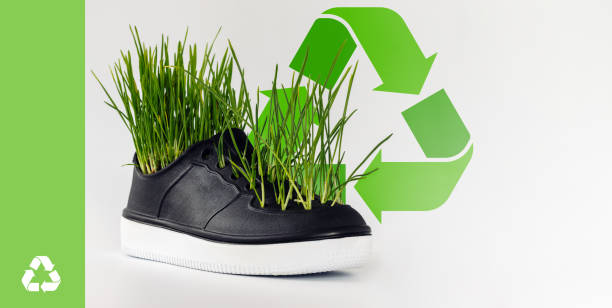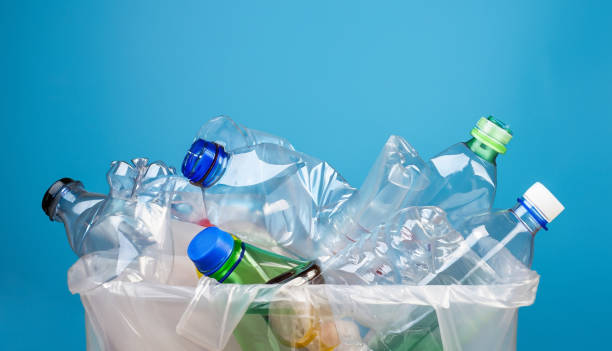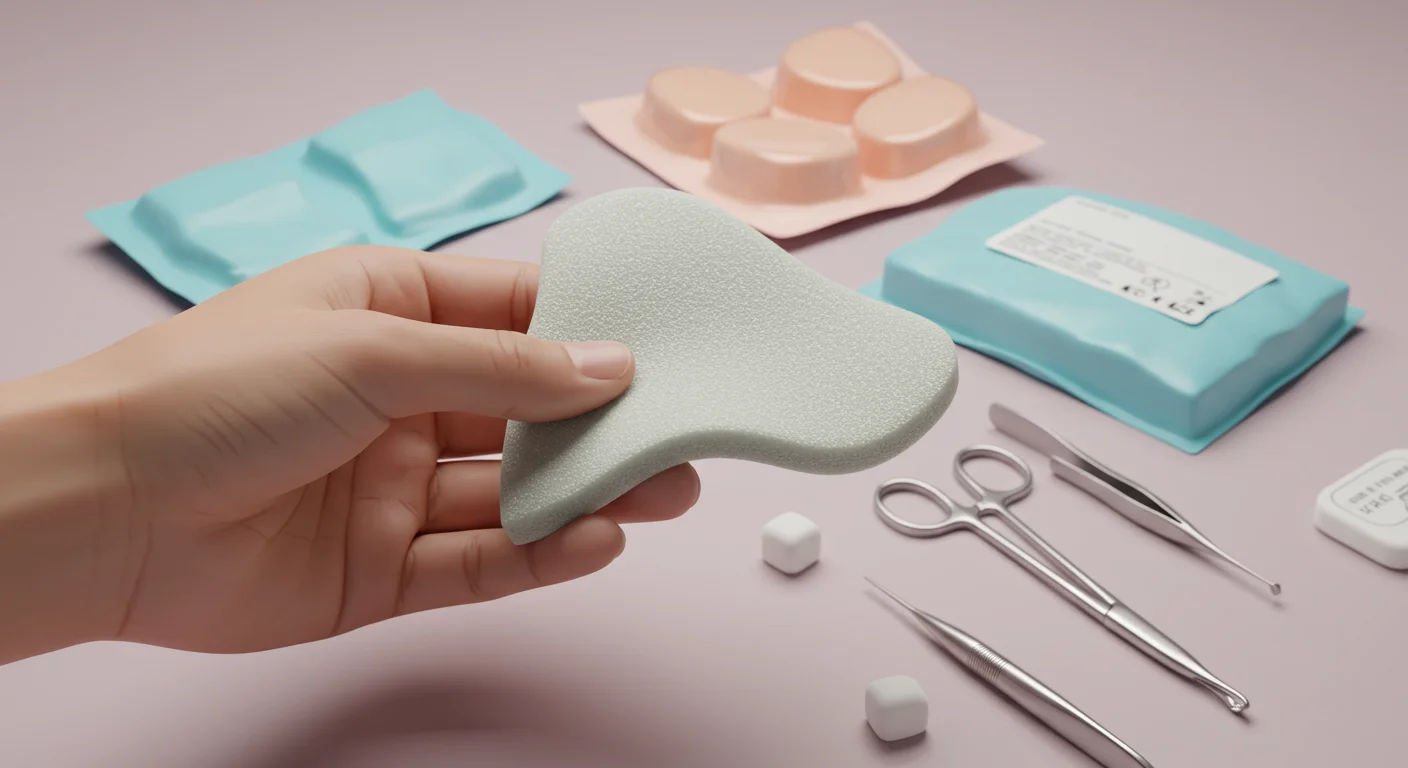EVA (Ethylene-Vinyl Acetate) has become a go-to material in the footwear industry due to its unique combination of comfort, durability, and lightweight properties.
Many people may wonder, “What is EVA material in shoes?” This article explores everything you need to know about EVA, including its advantages, disadvantages, and how it compares to other materials used in footwear.
What is EVA Material in Shoes?

EVA, or Ethylene-Vinyl Acetate, is a copolymer made by combining ethylene and vinyl acetate. The blend of these materials results in a flexible, durable, and lightweight substance, perfect for various footwear industry uses.
Properties of EVA
- Lightweight
EVA is one of the lightest materials used in shoe construction, making it ideal for running shoes and other footwear requiring minimal weight.
- Cushioning and Shock Absorption
The unique properties of EVA provide excellent cushioning, making it a go-to material for midsoles and insoles in shoes.
- Water Resistance
The moisture-resistant and waterproof EVA properties make it ideal for use in shoes that are worn in all weather conditions.
- Durability
The EVA resists cracking and becomes more resilient over time, making it perfect for footwear meant to withstand constant use.
EVA Used in Footwear
- Soles
EVA is most commonly used in shoe soles, particularly in running and sports shoes. Its lightweight nature and shock-absorbing properties help to reduce foot fatigue.
- Insoles and Midsoles
EVA is frequently used for the inner cushioning of shoes to provide comfort and prevent pressure on the feet.
- Outsoles
Some brands also use EVA in the outsoles of shoes for a soft, flexible base without compromising strength.
Types of Shoes That Use EVA Material

EVA is most commonly found in footwear designed for comfort, shock absorption, and lightness. Here’s a breakdown of the types of shoes that typically feature EVA:
Running Shoes
- EVA is perfect for running shoes because it provides excellent cushioning to reduce the impact on joints, especially during long-distance running.
- The lightweight nature of EVA ensures that runners don’t experience unnecessary fatigue.
Sports Footwear
- Sports shoes, including basketball and tennis shoes, often use EVA to provide additional comfort during high-impact movements.
- EVA’s shock-absorbing qualities help to protect the feet from the wear and tear of constant movement.
Casual Footwear
- Many casual shoes, including sneakers and slides, incorporate EVA in the sole for added comfort without compromising on style.
- It’s also used in slippers, sandals, and even flip-flops for its lightweight and cushioned feel.
Is EVA a Good Material for Shoes?

When evaluating what EVA material in shoes offers, it becomes clear why it’s so popular in the footwear industry. EVA has several advantages, particularly for specific types of shoes such as running, sports, and casual footwear.
Advantages of EVA Material in Footwear
- Comfort
EVA’s soft, cushion-like feel makes it highly comfortable, especially for long periods of wear. Shoes with EVA soles are perfect for activities that involve a lot of walking, running, or standing.
- Lightweight
Compared to rubber or other traditional materials, EVA is much lighter. This makes footwear significantly more comfortable, reducing the overall weight of the shoe.
- Durability
EVA sole manufacturers often choose EVA because of its resistance to cracking and its ability to maintain its form over time. Even after extensive use, EVA soles can retain their shape and performance.
- Affordability
EVA is relatively cheap to produce compared to other materials, making it a cost-effective choice for manufacturers while maintaining quality.
Disadvantages of EVA Material in Footwear
EVA (Ethylene Vinyl Acetate) is commonly used in footwear for its lightweight, cushioned, and flexible properties. However, like any material, it does come with its disadvantages:
- Compression Over Time
EVA material tends to lose some of its cushioning properties after prolonged use. Over time, the foam can compress, leading to a decline in the comfort level of the shoe. This is especially true for shoes that are used heavily, such as running or hiking shoes.
- Limited Breathability
EVA is not as breathable as some other materials, like mesh or leather. This lack of ventilation can cause feet to overheat and become sweaty, leading to discomfort, especially in warmer climates or during intense physical activity.
- Environmental Impact
Although EVA can be recycled, it still contributes to landfill waste if not properly disposed of. The environmental impact is a growing concern for consumers and manufacturers alike, and there is pressure to find more eco-friendly alternatives.
- Slip Resistance Issues
In certain conditions, such as wet or slippery surfaces, EVA may not offer the same level of traction as rubber or other more slip-resistant materials.
Potential drawbacks of EVA in shoe soles
- Limited Durability Over Time
EVA can compress and lose its cushioning after extended use.
It may break down faster than rubber, especially under heavy loads or intense activity.
Frequent use can lead to a noticeable decrease in support and shock absorption.
- Poor Traction on Some Surfaces
EVA soles typically offer less grip compared to rubber soles.
They can be slippery on wet or smooth surfaces.
This makes them less suitable for rugged outdoor or industrial environments.
- Less Eco-Friendly
EVA is a synthetic material derived from petroleum.
It’s not biodegradable and can contribute to long-term waste.
Recycling options for EVA are limited, raising concerns about environmental impact.
EVA Compares to Other Shoe Materials

EVA often competes with other materials like rubber, Phylon, and memory foam in the footwear market. Here’s a look at how it stacks up:
EVA vs. Rubber
EVA is more flexible and lightweight and offers excellent cushioning.
Rubber is heavier, offers better traction, and is more durable in outdoor environments.
EVA vs. Memory Foam
Memory Foam provides personalized cushioning based on the shape of the foot but is heavier and less durable than EVA. It offers lightweight, consistent cushioning but doesn’t mold to the foot as memory foam does.
EVA vs. PVC
EVA is commonly used for midsoles, insoles, and outsoles in running shoes, sneakers, and sports footwear due to its lightweight and cushioning properties.
PVC is used mainly in the upper parts of shoes (like sandals) or for waterproof shoes and boots. It is also often used for the outsoles of cheaper footwear.
Is EVA Rubber or Plastic?

EVA is often compared to rubber because of its flexibility and soft feel. However, EVA is a type of plastic. Specifically, it is a copolymer made from ethylene and vinyl acetate.
Unlike rubber, which comes from natural sources like rubber trees, EVA is entirely synthetic. This gives it the ability to be more durable and consistent in its manufacturing process.
EVA vs. Rubber
EVA is lightweight, offers cushioning, and is more durable in the long term. While rubber provides better traction and is more elastic, but tends to be heavier than EVA.
EVA vs. Phylon
Phylon is a material made by compressing EVA foam under high heat and pressure. This process results in a denser, more resilient material compared to regular EVA.
While Phylon sole manufacturers use this technique to produce firmer, long-lasting soles, EVA remains popular in footwear for its lightweight and shock-absorbing qualities.
In addition, KFCASE has many practical and creative custom EVA shell inspirations. We focus on high-quality, customized EVA shell production and design.
FAQs
Are Crocs made of EVA?
EVA was primarily used in athletic footwear until Crocs introduced their iconic shoes in 2002. Technically, Crocs are made from Croslite, a proprietary material that contains polyethylene vinyl acetate (PEVA or EVA for short). Crocs was the first brand to create an entire shoe made from EVA, revolutionizing the footwear industry.
Are EVA shoes waterproof?
The high-quality, odor-neutral EVA has been tested for harmful substances and combines numerous positive attributes. It’s waterproof, ultra-lightweight, washable, and therefore extremely easy to care for.
Does EVA contain formaldehyde?
EVA foam is free of other chemicals like formaldehyde and latex, as well as any animal products and BPAs. Research does suggest that certain chemicals used in the production of EVA foam, such as volatile organic compounds (VOCs), may pose health risks, including respiratory irritation and allergic reactions.
Conclusion
In summary, what EVA material in shoes provides—comfort, durability, and lightweight properties—has made it a staple in the footwear industry. From running shoes to casual wear, EVA sole manufacturers such as KFCASE use this material to create footwear that is both functional and affordable. If you are interested, you can click on the website to check it out.
However, like all materials, EVA does have some downsides, such as its tendency to compress over time and its lack of breathability. Despite these drawbacks, EVA remains a top choice for many brands due to its cost-effectiveness and performance.

















